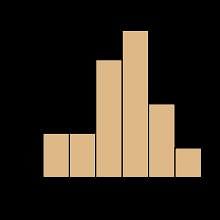As a project manager I believe you all use various tools and techniques to control the quality in your project. As a project manager you should be aware of all the tools and techniques used. You should be aware which quality tools to be used and when? By whom and how? Many project managers fail to control the quality in their project as they chose the wrong tools and techniques for their project. As a project manager you should pick the correct tools for the quality control and for this you need to know the basic attributes of all the quality tools mainly Ishikawa’s seven basic tools of quality. Let me explain you these tools one by one:
Cause and effect diagram:
It is popularly known as Fishbone diagram (as it looks like a fishbone) or sometimes known as Ishikawa’s diagram. It is frequently used to find the root causes of the defects. Whether the main issues are from hardware or it is from the software. Whether the problem is from management or the problem is from skill set of the people. By analyzing these you can get the root cause of the defects, that’s why it is also known as root cause analysis. If you are managing a long term project you should use this quality tool at the utmost.
Pareto Chart:
80% of problems are due to 20% of the root causes. It is like prioritizing the defects. Search for the main reason and try to reduce the maximum problems. This is frequently used when you are in hurry and you have to reduce the defects… as a project manager you should know by which factors you are getting more problems and document it and try to find out a way to remove these defects as by removing the same defects you will be able to reduce maximum problems. It is based on the Joseph Juran’s 80/20 principle. Pareto recommends that this tool can be very useful if you are getting many errors frequently. As a project manager you should detect an error which can resolve your maximum problems.
Control Chart:
It is not possible to standardize the sizes, weights of the deliverables. Instead you can decide your upper limit and lower limit of acceptance. That upper and lower control limit is decided by project manager and other stakeholders. If the variables are within the limit, the project will be treated ‘in control’. There is a line in the middle of the control chart which is known as ‘mean’. It represents the middle of the range of an acceptable variation. If seven variables are found in one side of the mean, it is known as rule of seven and the project will be treated as ‘out of control’. There is also upper and lower specification limit which are decided by the end customers only.
Histogram:
It is a graphical representation showing a visual impression of the distribution of data. It displays data in the form of bars and columns. It shows what problems are in your project.
Run Chart:
It shows the trends of variations. If you need to assess the variable you need to check your progress chart. You have to see the patterns of the variations.
Flowchart:
It shows how the systems or processes flow from beginning to end and how are they related to each other. Through it you can assess a particular process and analyze the potential quality problems. It is an important tool to be used in so many project management activities.
Scatter Diagram:
It is like trying to trace the relation between two variables. Like due to one defect another defect is created maintaining a relationship. Apart from the above-mentioned tools there are some other tools available that can be used as a quality tool like statistical sampling. It is frequently used when you are working on a bulk volume where time does not permit you to cross check each and every deliverables. To save money on your project and time consuming on your project, you picked randomly few deliverables and check the quality of those deliverables. If it is up to the mark, the entire lot could be delivered.
Our Project Management Courses Duration And Fees
Project Management Courses typically range from a few weeks to several months, with fees varying based on program and institution.
| Program Name | Duration | Fees |
|---|---|---|
| Post Graduate Program in Project Management Cohort Starts: 1 Jun, 2024 | 6 Months | $ 3,000 |
| PMP® Plus | 36 Months | $ 1,849 |
